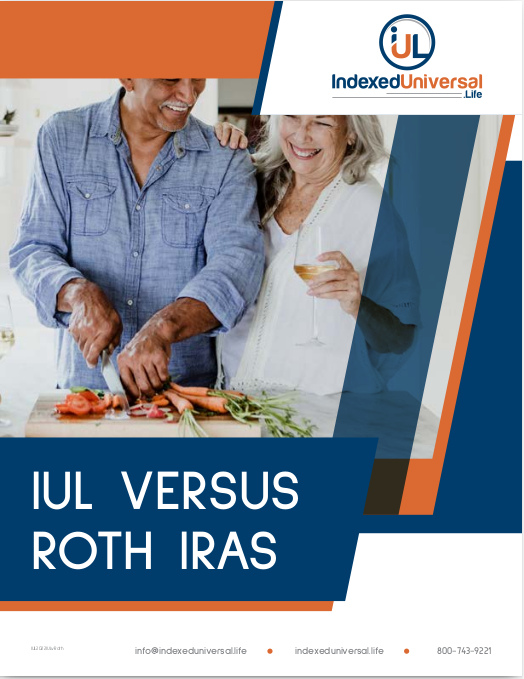
Those looking for the right life insurance coverage have various options, ranging from cheap term life insurance to pricey permanent life insurance policies. Index universal life insurance (IUL) and whole life insurance are two popular choices for the latter. Individuals considering these alternatives should carefully evaluate their needs before making a life-long decision.
Whole Life Insurance
Whole life insurance plans are often considered the safest alternative for people who want to provide for their families after death. So, looking for providers is essential to guarantee they’re among the greatest whole insurance companies currently.
Pros: –
- Guaranteed death benefit
- Fixed premiums don’t increase with age
- Option to pay up face value at age 65, in 10 or 20 years
- Borrow against cash value if necessary later in life
- Interest and cash distributions may be tax-free
Cons: –
- The interest rate might not be guaranteed (although usually there’ll be a minimum floor rate)
- With low relative interest rates, there’s a potential opportunity cost
- Non-flexible premiums that must be paid consistently
Indexed Universal Life Insurance (IUL)
Indexed universal life insurance plans are still relatively new. As the name indicates, their earnings potential is linked to an equity index. Generally, these policies are often riskier and more complicated.
IUL plans allow policyholders to direct all or part of their net premiums (after insurance coverage and costs) to a cash account. This account pays out interest depending on the performance of an underlying index, with a 0% return floor and a cap rate or participation cap on the return.
The dynamics get a little murkier when we examine how the index exposure is constructed. Rather than acquiring shares directly, the insurance company often buys into options contracts with a portion of the policy premium, allowing them to pass on the upside profits while avoiding the downside lossesâ€â€at the penalty of increased counterparty risk.
According to research by The Bishop Company, several insurance firms give minimum cap rates of between 1% and 4% and participation rates of about 50% in sales materials. In comparison, others provide non-guaranteed cap rates of 10% to 14% and participation rates over 100%.
With these caps in place, a policyholder may only receive a 10% to 12% return if an underlying index yields 20%. Stock options also exclude dividends from any index return computation, which typically contribute 2% to 4% of the overall market return. Without these returns, policyholders may earn less than the benchmark indexes.
Pros: –
- Guaranteed benefits
- Flexible premium payments
- Higher interest-earning potential
- Option of borrowing against policy later on
Cons: –
- Earnings are determined by equity performance
- If the index falls, returns may be lower; however, there are frequently floors to avoid excessive losses
- Premiums can potentially rise over time
- Investing in complicated derivatives
- Higher costs
- If premium payments fall behind performance, the death benefit may be decreased or lost
Choosing Between the Two
Indexed universal life insurance plans are more akin to retirement income vehicles. The money in these insurance policies grows tax-free and may be used to pay premiums. Furthermore, policyholders can draw tax-free payouts from the accrued cash value throughout retirement to assist meet any type of expenseâ€â€useful for people who have already maxed up their Roth IRA and other alternatives. Indeed, many plans are marketed to increase cash value rather than provide a guaranteed death benefit.
It’s also vital to analyze how indexed universal life insurance use derivatives. Because a call option is automatically limited at a specific level or expires worthless, IUL policies cap maximum returns during good years and limit downside returns to 0% during bad years. If equities indexes have been performing well recently, insurance providers promising strong returns for IUL policies may be trying to capitalize on “recency bias.”
Some IULs additionally have guaranteed contractual benefits via riders, which can give guaranteed benefits similar to general account policies. Nonetheless, IUL policyholders shouldn’t rely on high equity index performance to fund their life insurance over time. High returns during some years may cause policyholders to overlook funding the insurance’s cash value, resulting in a loss in coverage later in life if returns aren’t quite as good. Borrowing against the cash value and paying interest can be dangerous if the credited interest doesn’t cover the loan expenses.
What are the primary distinctions between IUL and whole life?
Whole life insurance is simply life insurance with no frills and a fixed premium. On the other hand, indexed universal life insurance plans are more like retirement income vehicles, with an investment part that pays an interest rate that tracks the growth of an equity index.
Are IUL policies risky?
That depends on your definition of risk and your risk tolerance. Whole life is for you if you want basic vanilla insurance with no risk and no opportunity for a return on investment. IUL policies are riskier, which is why they provide a return.
Which option is the safest?
Whole life insurance is considered the safest choice for people seeking to care for their families after death. Remember that, in addition to providing a death benefit, whole life insurance has a savings component in which cash value can build tax-free. These plans are sometimes referred to as “traditional” life insurance.
Bottom Line
Individuals looking for permanent life insurance with a cash component and insurance coverage have several possibilities. Whole life insurance is often the safest option for people seeking something predictable and dependable. Still, IUL plans provide an attractive retirement-planning vehicle with higher upside potential and tax advantages.
Contact Information:
Email: [email protected]
Phone: 2564383071

